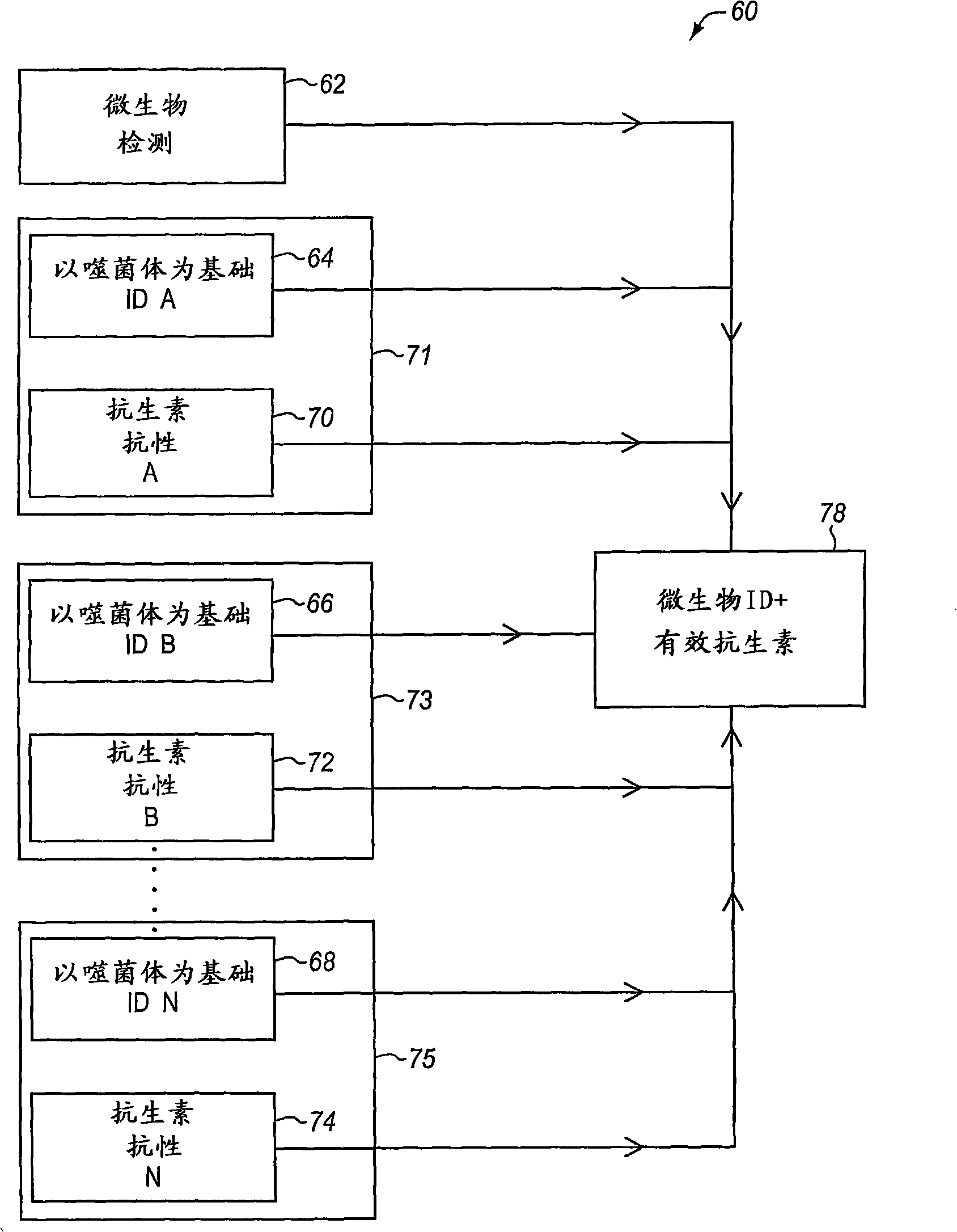Method and apparatus for identification of microorganisms using bacteriophage
An identification method and technology of microorganisms, applied in the direction of biochemical equipment and methods, and the determination/inspection of microorganisms, can solve the problems of lengthy, complex, and difficult to distinguish between progeny phage and parental phage, etc., to improve the signal-to-noise ratio, improve Effectiveness of reliability and cost assurance
- Summary
- Abstract
- Description
- Claims
- Application Information
AI Technical Summary
Problems solved by technology
Method used
Image
Examples
Embodiment approach 60
[0033] figure 1 An embodiment of the method of the present invention is shown, wherein the detection of microorganisms 22 and the bacteriophage-based ID method as 26 are performed consecutively, ie the detection of the microorganisms is followed by the bacteriophage-based ID method. figure 2 An embodiment 60 of the method of the present invention is shown wherein the blood microbiological detection 62 and the bacteriophage-based ID method 64 are performed in parallel, ie, the bacteriophage-based ID method is performed at the same time as the detection method. This embodiment may be preferred in cases where there are indications that the patient has a particularly acute infection or is suspected of having a particularly virulent pathogen, such as methicillin-resistant Staphylococcus aureus (MRSA), before the presence of the microorganism is confirmed to be detected. In such cases, rapid identification of selected microorganisms is of greater importance and it would therefore b...
PUM
 Login to View More
Login to View More Abstract
Description
Claims
Application Information
 Login to View More
Login to View More - R&D
- Intellectual Property
- Life Sciences
- Materials
- Tech Scout
- Unparalleled Data Quality
- Higher Quality Content
- 60% Fewer Hallucinations
Browse by: Latest US Patents, China's latest patents, Technical Efficacy Thesaurus, Application Domain, Technology Topic, Popular Technical Reports.
© 2025 PatSnap. All rights reserved.Legal|Privacy policy|Modern Slavery Act Transparency Statement|Sitemap|About US| Contact US: help@patsnap.com



